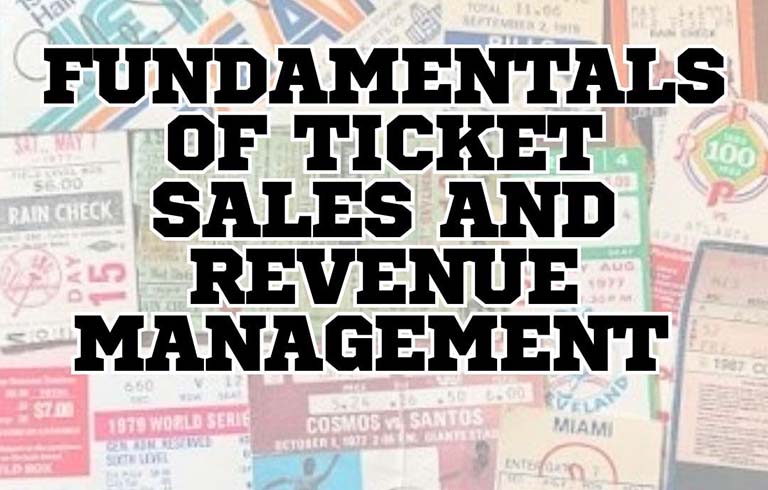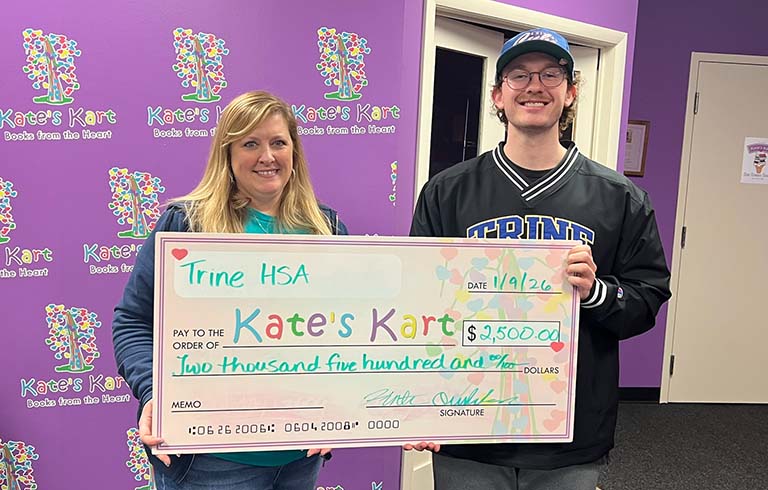Though the lockout threatening to postpone the start of the major league baseball
season is currently dominating the attention of fans and sports media, the sport faces
many more challenges, according to faculty from Trine University’s Center for Sports
Studies.
“The games routinely last over four hours and young people are not playing or watching
the game at the rate they used to,” said Andy Brown, assistant professor of communication.
“For the game to survive, everyone involved needs to be focused on fixing those issues,
not making things worse with a public contract dispute.”
“Major League Baseball has to make the game more palatable for younger viewers,” agreed
Brandon Podgorski, associate professor of sport management and director of the Center
for Sports Studies. “Expanding the playoffs and the universal designated hitter are
good starts, but MLB has a bit of a marketing problem. Shoehi Ohtani had a remarkable
season as both a pitcher and hitter last season, but I’m not convinced many fans outside
of baseball know who he is. Young and fun players like Ohtani, Fernando Tatis Jr.,
and Aaron Judge need to be everywhere.
“Accordingly, MLB The Show is a hugely popular video game with young adults and kids.
I would like to see MLB set up their own esports league similar to the NBA2K league.”
As for the lockout itself, the faculty members say the biggest stumbling block is
baseball’s luxury tax.
“Major League Baseball is the only major sport in America without a salary cap, but
the luxury tax acts as a de facto cap for baseball,” said Brown. “If owners spend
more than the cap limit, they have to pay a huge tax with the money divided out to
the other teams. Most owners will do whatever it takes to avoid paying the tax, which
is why the players’ association wants the tax threshold to be raised significantly.
The owners are proposing a much smaller raise. If the owners and players can get the
luxury tax figured out, the other issues may fall into place.”
“In its simplest terms, the owners want to limit the amount they have to pay to players
and the players want to maximize the amount they get paid, along with some other protections,”
said Podgorski. “For example, teams manipulating service time of players seems to
be fairly common. Under the service time provision of the collective bargaining agreement
(CBA), players make a little more than the MLB minimum of $570,500 until they reach
three years of service time. A year of service time is defined as 172 days on the
active major league roster, so teams may hold back prospects for a month or two before
bringing them up to the big leagues, thus avoiding having to burn a year of service
time and controlling the player for an extra year.
“Battles over free agency have also been holding up an agreement as the union is asking
for free agency to begin at age 29.5 if a player had accrued five years of service
time, or for all players once they hit six years of service time, whichever comes
first. The owners have been steadfast against this proposal and want to keep the current
free agency rules of six years to free agency and three years of arbitration.
“The owners are pushing for an expanded playoff because they get to keep 100 percent
of television revenue from playoff games, but the players only receive revenue of
ticket sales, which is considerably smaller. As a concession, the owners have offered
to reduce the number of regular season games to 154 from 162, and implement the universal
designated hitter in both the National and American Leagues. Ostensibly, the players
would benefit as it would open up an additional roster spot on each team and inject
more offense, since pitchers would no longer have to hit in National League games.”
Besides the financial interests of both sides at play, Brown and Podgorski said players
may be taking a hard line because they felt they conceded too much in recent agreements.
“The MLB Players’ Union is one of the most powerful and successful unions in the world,”
said Brown. “There is a perception among many of the players that they lost in the
last round of negotiations with the owners in 2016 and don’t want to take another
step back this time. Issues like service time manipulation and clubs basing contracts
on advanced analytics have changed the game and irritated the players for years now.
They seem determined to hold out until they can get some traction on those issues.”
“There is a feeling the players have ‘lost’ the last couple of bargaining agreements
with the owners and they are determined not to allow that to happen again,” Podgorski
said. “I also think that there are some lingering hostilities from the 2020 negotiation
between the players and MLB on restarting the regular season after COVID-19 cancelled
Spring Training. The players and the league couldn’t come to an agreement and Commissioner
Rob Manfred exercised his right to implement a 60-game season. Although this was previously
negotiated, it’s possible that the players are still angry an agreement with the owners
didn’t happen.”
The faculty members feel there will not be a resolution to the lockout until both
sides begin to take a financial hit.
“The players’ union has a huge war chest and can pay its players if the stoppage lasts
into the season,” Brown said. “The owners make most of their money during the postseason,
so as long as playoff games are not lost, they might be willing to hold for a significant
portion of the regular season as well. This stoppage has been on the horizon for
a decade or more, and both parties are prepared to ride this out for a while.”
“Normally, I would say that the owners hold most of the leverage simply because the
players are only paid when they play, but it seems that the players have really dug
in their heels in these negotiations,” said Podgorski. “The owners have been making
small concessions to the players over the past couple of weeks, adding a few million
dollars to the competitive balance threshold for example, but as of February 25, the
sides still remain far apart. This is especially true when it comes to player compensation.
At this point, however, it feels as if major concessions won’t be made until regular
seasons games are missed.”
They also feel the sport won’t suffer any long-term damage from the lockout as long
as it doesn’t go too far into the season.
“Many Americans don’t turn their attention to baseball until the summer anyway,” Brown
said. “Some fans will of course be turned off, but as soon as the games get underway,
whenever that is, many longtime fans like myself will probably jump back in.”
“Once the season starts, assuming no regular season games are missed, I think most
of this attention goes away and everyone moves on,” Podgorski said. “Fair or not,
some people view this as millionaires fighting billionaires so I’m not convinced that
the casual fan knows what’s going on or, frankly, cares.”
However, Brown said, it’s important that the sport get its young stars like Tatis,
Vladimir Guerrero and Ohtani back into the limelight.
“Until guys like that are back on the field, it’s hard to imagine most Americans paying
much attention to baseball at all,” he said. “That alone should be motivation enough
to get a deal done sooner rather than later.”



